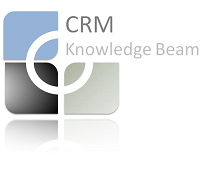Contact centers are at the forefront of customer interactions, and even CEOs are starting to see contact centers as strategic to business growth and performance. However, contact center managers are under constant pressure to control costs while improving service quality and customer experience. Agent salaries constitute more than 60% of contact center operational costs and, therefore, agent productivity is always on the radar screen of contact center executives.
The Agent Productivity Challenge As every contact center manager knows, enhancing agent productivity is not easy. Common barriers include: Constant agent churn. Unrelenting introduction of new products due to commoditization and compression of product lifecycles. Rising costs of keeping knowledgeable agents.
Pressure to use outsourced agents who know little about the company’s products and services. Ongoing consolidation of contact centers across company divisions and products. Mergers and acquisitions-rampant in the last few years-that require agents to answer questions about products and services that span the merging businesses.
Solutions Assessing tools to improve productivity in agent service, however, can be a bewildering experience. Popular solutions for improving contact center staff performance are workforce management, monitoring, agent training, and knowledge-enabled interaction management tools. They can be classified into two groups: Pre and post-interaction tools: Workforce management tools primarily help in forecasting service demand and scheduling agents. Monitoring or quality management tools help managers listen to, record, and evaluate agent-customer interactions. Training tools help educate agents about products, services, and interaction skills. Interaction management tools: Knowledge-enabled interaction management tools help agents quickly find answers to customer questions and also up-sell or cross-sell.
So Where Should The Contact Manager Begin?
Address the effectiveness and efficiencies of interactions first, before looking at other areas. Here is why. Knowledge-enabled interaction tools address the root cause of poor agent performance: agents’ inability to answer customer questions, solve problems, or carry out contextual selling activities. That inability comes from their lack of knowledge about the business’ products, services, and best practices. After all, what is the point of scheduling or supervising agents well, when agents are not equipped to handle the interaction satisfactorily? That’s addressing the superficial issue while ignoring the fundamental flaw.
Choosing A Knowledge Tool For Your Agents Consider the following criteria when evaluating knowledge management solutions to enable customer interactions: Does the solution support interactions across multiple channels and access methods-phone, email, web chat, and web self-service? Does it provide flexible and configurable access methods to content? Does it support search, folder-browse, and dialog-based guided help to increase the productivity of agents of varying competence levels? For instance, novice agents will find a dialog-based problem resolution process easier to use than a complicated search with hundreds of hits. A one-size-fits-all approach to content access is not the optimal approach to knowledge-enabling agents. Will the solution allow you to leverage existing knowledge content and transactional information without having to engage in expensive and time-consuming integration projects? Does it provide adaptive content management tools to monitor content effectiveness and automatically trigger tasks to modify, add, or delete content? Most importantly, does it let agents and other users submit content and feedback? Such tools are critical for optimizing content performance while controlling maintenance costs. Is the solution based on a common platform for multichannel content management for increased service consistency across channels and reduced total cost of ownership? Choosing the right solution for knowledge-enabled interaction management will address the root cause of poor agent performance. It’s important to optimize the quality of interactions by arming agents with common multichannel knowledge content and flexible ways to access the content, before optimizing pre- and post-interaction activities in a contact center.
